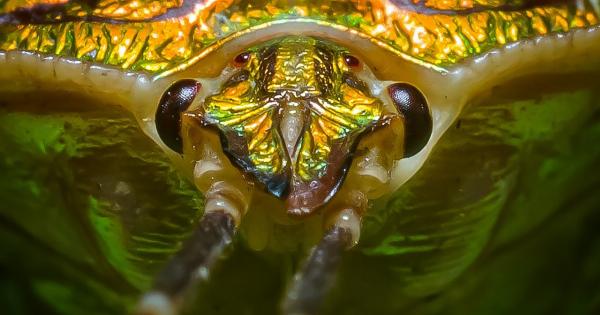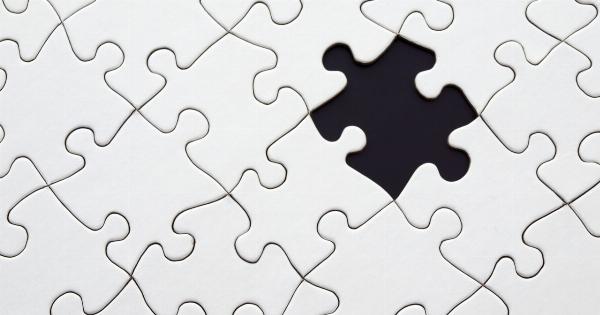Love and sexual desire are two of the most powerful driving forces behind human behavior. While they are often intertwined, the neuroscience behind the two is quite different.
In this article, we will explore the biology and psychology of love and sexual desire, and how they intersect.
The Biology of Love
When we fall in love, our brains release a cocktail of chemicals that create a powerful sense of euphoria and pleasure. One of the main chemicals at work when we are in love is dopamine, which is associated with reward and pleasure.
This surge of dopamine is also present in areas of the brain that are linked to addiction. This is why, when we are in the early stages of romantic love, we can feel almost obsessed with our partner.
Another chemical at work in love is norepinephrine, which is associated with increased heart rate and blood pressure. This can explain the physical sensations we feel when we are around our partner, such as sweaty palms or a racing heart.
Finally, there is oxytocin, often referred to as the “love hormone.” Oxytocin is released during physical touch, such as hugging or kissing, and is associated with feelings of bonding and attachment.
It is also present during childbirth and breastfeeding, helping to form strong emotional bonds between mothers and their babies.
The Psychology of Love
While the biology of love is important, so too is the psychology. When we fall in love, we often experience a “honeymoon phase,” in which we see our partner in an idealized light. This is known as romantic love.
Over time, however, this honeymoon phase fades, and we enter into a more realistic, practical type of love known as companionate love. This is the type of love that is associated with long-term relationships and marriages.
Love is also highly influenced by cultural and societal factors. For example, in some cultures, arranged marriages are the norm, while in others, individuals may choose to date around and experiment with different partners.
The way we understand and experience love is shaped by our environment, upbringing, and personal experiences.
The Biology of Sexual Desire
Sexual desire is also a highly complex biological process. While it is often linked with love, they are not the same thing. Sexual desire is largely influenced by hormones, particularly testosterone.
In both men and women, testosterone drives sexual desire, although men tend to have higher levels of this hormone overall.
Another hormone at play in sexual desire is estrogen. In women, estrogen is responsible for the production of vaginal lubrication and the sensation of sexual arousal.
During menopause, when estrogen levels drop, women often experience a decrease in sexual desire and may struggle with vaginal dryness.
The brain also plays a role in sexual desire. The amygdala, often referred to as the “primitive” part of the brain, is responsible for regulating basic emotions such as fear and pleasure.
In terms of sexual desire, the amygdala is involved in the processing of sensory information, such as touch and smell.
The Psychology of Sexual Desire
While hormones and the brain play an important role in sexual desire, there is also a psychological component. Sexual desire can be influenced by a variety of factors, such as stress, anxiety, and relationship issues.
If someone is experiencing depression or other mental health challenges, their sexual desire may also be impacted.
Sexual desire can also be influenced by personal preferences and societal norms. For example, some individuals may have a preference for certain types of sexual activities or may identify as a particular sexual orientation.
Society often has a set of norms and expectations around sexuality, which can influence how individuals experience and express their sexual desire. For example, some societies may be more conservative, while others may be more permissive.
The Intersection of Love and Sexual Desire
While love and sexual desire are distinct processes, they often intersect. For example, in a long-term relationship, both love and sexual desire are important components of a healthy and fulfilling partnership.
However, the way they intersect can vary from person to person and relationship to relationship.
In some cases, sexual desire may be present without love, such as in casual sexual encounters.
However, in other cases, love may be present without sexual desire, such as in the case of a couple in a long-term relationship experiencing a decrease in sexual desire due to external factors.
The intersection of love and sexual desire can also be influenced by social and cultural factors.
For example, some societies may view sex as something that only occurs within the confines of a committed relationship, while others may have more fluid attitudes towards sexuality and love.
The Role of Communication
Ultimately, the intersection of love and sexual desire is highly individualized and complex. One of the most important factors in navigating this intersection is communication.
Couples who are able to effectively communicate their needs and desires are more likely to have a satisfying and fulfilling relationship, both in terms of love and sexual desire.
Communication can involve discussing sexual preferences and desires, as well as negotiating boundaries and expectations within the relationship.
It may also involve discussing the role of love and commitment in the relationship, and how these factors interact with sexual desire.
Conclusion
Love and sexual desire are two of the most complex and powerful processes in the human experience. While they are distinct, they often intersect and influence one another.
Both are shaped by a combination of biology, psychology, and social and cultural factors. By understanding the science behind love and sexual desire, we can begin to better navigate these aspects of human behavior and build healthy, fulfilling relationships.

























